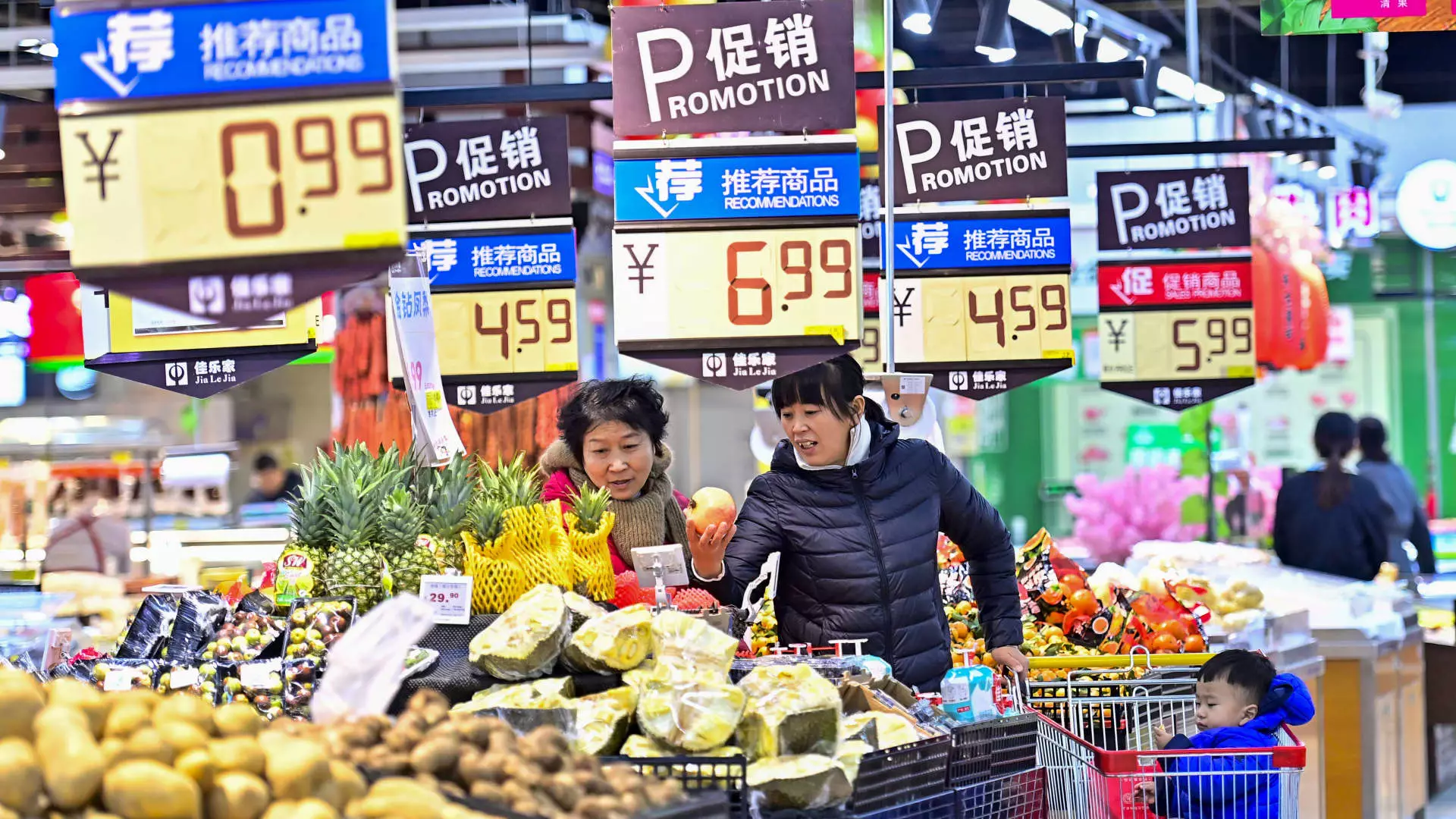In December, China’s consumer price index (CPI) registered a meager increase of just 0.1% year-on-year, according to the National Bureau of Statistics. This figure has raised alarm bells regarding potential deflation, especially as it trails the 0.2% rise that was observed in November. Interestingly, this outcome aligns closely with predictions from Reuters, indicating a broader consensus on China’s challenging economic health. One of the stark details to highlight is the performance of the core CPI, which strips out the more volatile food and energy prices—an increase of 0.4% was recorded, up from 0.3% the month before.
The stagnation of the CPI on a month-on-month basis also necessitates scrutiny. Prices remained unchanged, a stark contrast from the 0.6% decline witnessed earlier. A notable factor influencing these trends is the decline in food prices. The weather has played a crucial role, contributing to a 0.6% decrease in food prices compared to the previous month. This trend was spearheaded by sharp drops in prices for essential commodities like fresh vegetables and fruits, which fell by 2.4% and 1%, respectively. Pork prices, a significant component in the CPI basket, also showed a decline of 2.1%. Analysts, like those at ANZ Bank, predict that these weaknesses in pork prices will negatively impact headline CPI moving into 2025.
Producer Price Index and Economic Sentiment
The Producer Price Index (PPI) paints a concerning picture as well. December marked the 27th consecutive month of decline in wholesale prices. The PPI fell by 2.3% year-on-year, slightly better than the decline anticipated by Reuters, which was at 2.4%. On a monthly scale, the PPI registered a marginal decline of 0.1%, contrasting with November’s slight increase. These fluctuations have emerged amidst temporary suspensions in infrastructure and real estate projects due to off-season conditions, directly affecting demand for industrial materials like steel.
Amid these data points, concerns regarding China’s subdued domestic demand continue to mount. Despite a plethora of stimulus measures deployed by the government since last September—spanning interest rate cuts, support for the stock and property sectors, and increased lending—consumption has not bounced back as hoped. Recently, the expansion of a consumer trade-in scheme targeting specific products has been likened to a “quick fix,” offering temporary relief without stimulating broader consumer interest, as pointed out by Louise Loo, lead economist at Oxford Economics.
The upcoming Chinese New Year, which typically stimulates significant consumer spending, also hints at the grim expectations tied to ongoing deflationary pressures. Consumers are adopting a wait-and-see approach, seeking discounts before making purchases, as noted by Shaun Rein of the China Market Research Group. While programs like “cash for clunkers” aim to invigorate the retail sector, they often fail to provide a sustainable solution. As Rein aptly noted, there’s a limit to how many appliances consumers will desire, making it clear that a singular focus on upgrading existing goods is insufficient for a retail resurgence.
However, there are diamonds in the rough. China’s factory output has shown signs of consistent growth over the past three months, albeit with a deceleration in December. Carlos Casanova from Union Bancaire Privée noted some positive indicators following the policy shifts initiated in September, yet he cautions that significant challenges, particularly in the property sector and ongoing trade frictions with the U.S., still loom large over the recovery narrative.
The outlook for China’s economy remains precarious. Within the broader context of global economic conditions—as reflected by the onshore yuan hitting a 16-month low against the dollar—forecasts for reflation seem underwhelming. The persistent struggle for consumer confidence, coupled with waning appetites for spending, suggests that the path to a robust economic revival will be fraught with challenges.
While China grapples with its inflation issues, the combination of external pressures and internal market dynamics will be pivotal in shaping the country’s economic trajectory in the months and years to come. As authorities seek to stimulate consumption and stabilize prices, the effectiveness and consequences of their measures remain to be fully realized.


Leave a Reply